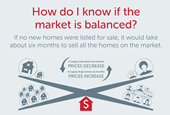
As home prices and interest rates rise, many first-time buyers may be worried about their ability to purchase in today’s market. Many first-time buyers are applying for loans backed by the Federal Housing Administration (FHA), because the FHA can approve a loan with a down payment as low as 3.5 percent.
Here are insights you can use as you consider an FHA loan to buy a home in Minnesota or western Wisconsin.
FHA loan limits are higher in metro areas
FHA loans are meant to be “helper loans,” so while you won’t be able to purchase a mansion with an FHA loan, you should be able to purchase a fantastic starter home. FHA loans have limits that vary by county, and these limits are based on the average cost of a home in that area.
Because metro homes are more expensive than outstate homes, metro counties have higher FHA loan limits. In Minnesota, the 2016 FHA loan limit for single family homes in Anoka, Carver, Chisago, Dakota, Hennepin, Isanti, Le Sueur, Mille Lacs, Ramsey, Scott, Sherburne, Sibley, Washington and Wright counties is $326,600. The FHA loan limit for Cook County is $282,900. All remaining counties in Minnesota have an FHA loan limit of $271,050 in 2016.
In Wisconsin, the counties of Kenosha, Pierce and St. Croix have an FHA loan limit of $326,600 in 2016. The loan limit for Milwaukee, Ozaukee, Washington and Waukesha counties is $288,650, and all other counties have a 2016 FHA loan limit of either $271,050 or $271,400.
See 2016 Minnesota FHA loan limits by county.
See 2016 Wisconsin loan limits by county.
Buy a home with as little as 3.5 percent down
According to the National Association of REALTORS®, first-time buyers report that saving a down payment is the hardest part of purchasing a home. While common wisdom says that you must have 20 percent down in order to buy a home today, it’s actually possible to secure an FHA loan with as little as 3.5 percent down.
How does this minimum down payment factor into the FHA loan limits? First, keep in mind that the limit of an FHA loan is on the total value of the loan, not the price of the home you hope to purchase. Let’s say you find a perfect house worth $275,000 in Bemidji, Minnesota. To secure an FHA loan on this property, you’d need a minimum of $9,625 (or 3.5 percent) as a down payment. After removing that $9,625 from the asking price, you would only be applying for an FHA loan worth $265,375 – which is below the FHA loan limit of $271,050 for Bemidji County.
Remember, every loan applicant is different, and it’s best to speak personally with a mortgage loan officer to see what you can truly and responsibly afford.
Raise your buying power with a higher down payment
You can also increase your buying power by putting more money down at closing. Pretend you are still shopping in Bemidji. If you find your dream home priced at $300,000, you could still apply for an FHA loan provided you have a 10 percent down payment ($30,000). With $30,000 down, the loan amount would be $270,000 – just shy of the FHA loan limit of $271,050 for Bemidji County.
Of course, not everyone has the option to raise their down payment at will. If you are struggling to get to 3.5 percent down or simply wish you had more to put down, consider asking for gift funds from family members or friends. You can also see if you qualify for down payment assistance programs.
Where do you stand?
We broke out a few different situations above, but the numbers are all hypothetical until you work with a mortgage loan officer to analyze your personal financial situation. Get started today to determine where you stand, what you can afford and if an FHA loan is the right choice for you.
For more buyer insights you can use, follow #BuyerInsights on Twitter, Facebook, Instagram and YouTube.








